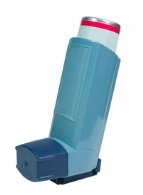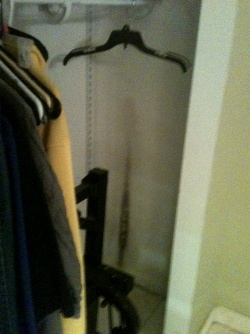Find a Mold Specialist Now
Click or Call, Toll-Free 24/7
Allergy Asthma Mold
If you have an allergy asthma mold problem, then it is important to understand what causes the allergic reaction and how you can lessen asthma allergy mold symptoms. Mold is a common substance that can be found both indoors and outdoors, and there are several steps that you can do to reduce your mold exposure.

How Mold Affects Asthma
If a person has an asthma allergy mold problem, then inhaling mold spores may cause their immune system to overreact. This situation often causes an asthma attack, so if you have asthma along with a mold allergy it is best to avoid mold as much as possible.
Some people with an allergy asthma mold problem only have mild symptoms in the beginning, and the asthma attacks will not be severe at that point. But, over time the symptoms may become worse. Also, if the mold exposure increases, it may cause asthma attacks to happen more frequently.
How To Reduce Outdoor Mold Exposure
If your asthma allergy mold symptoms are a result of outdoor mold, then you should take a few precautionary steps to reduce the symptoms:
- Stay indoors during the warmer months since outdoor mold levels are higher in warm weather.
- Install a HEPA filtered HVAC system in your home to catch mold spores in the air.
- Use a portable air filter in the rooms where you spend a lot of time.
- Don’t spend much time near hay or straw, and avoid large fields of vegetation.
- Avoid yard work, especially mowing the lawn and raking leaves as these will aggravate your allergy asthma mold symptoms.
Another way to reduce your allergy asthma mold symptoms is by talking with a doctor who specializes in allergies. They will be able to help you find a medication that can reduce the allergy symptoms that you are experiencing. The medication will not completely get rid of your asthma allergy mold problems, but it will help to reduce the symptoms.
Preventing Indoor Mold
Indoor mold can grow in almost any humid, damp environment. Inspect your house thoroughly for any damp areas. If you find wet spots, identify the source of the water so that the dampness can be eliminated.
Be sure to keep good ventilation in the home. Run an exhaust fan in the bathroom during your shower, and open a window in the kitchen when you are washing dishes or cooking. Also, a dehumidifier can be used to reduce the moisture in the air, especially in damp areas of the home such as the bathroom and basement.
Testing For Indoor Mold
If you suspect that indoor mold is present, then you should talk with a mold specialist to identify the levels of mold within your home. A mold specialist has high quality equipment that can test the air as well as surfaces throughout the house for microscopic mold spores.
The best way to determine if there is an indoor mold problem is by having the air in your home tested by a mold specialist, because home testing kits are not always accurate. Allergy asthma mold symptoms can commonly be caused by indoor mold growth, and a specialist will help you to be able to identify how much mold is in your home. Additionally, they will be able to suggest a cleanup plan in order to get rid of the mold and end your asthma allergy mold problems.
Be sure to have a 2nd mold test done after the cleanup process is complete in order to be sure that the problem has been taken care of. Ask the mold specialist about precautionary steps that can be taken to prevent the mold from returning.
Why You Need a Professional Mold Tester
- Professionals have more sophisticated tests and are also trained to properly conduct the tests and interpret the results. Therefore, you’ll get more accurate results with a professional mold tester than you will with the kind of test you can buy at your local hardware store.
- Professional mold testers can tell you what type of mold you’re dealing with, which may help your physician provide the appropriate treatment for allergies or other symptoms. They can also advise you about the health risks associated with the type of mold found in your home.
- They will write a mold removal plan with safety precautions. This is important because if the mold is not removed properly, it will grow back and spread to other areas of your home. If the proper precautions are not taken, other areas of your home can be contaminated during the removal process.
- They can help you determine if you can do the mold cleanup yourself, or if the job is too difficult and a professional mold removal company should be hired.
- The mold tester will come back after the mold has been removed and test the mold levels again. They will also evaluate the removal job and make sure it has been done properly and thoroughly.
To find professional mold testers in your town, just click here.
Return From Allergy Asthma Mold To Our Symptoms Of Mold Allergies Page
Black Mold Health Symptoms Home Page





